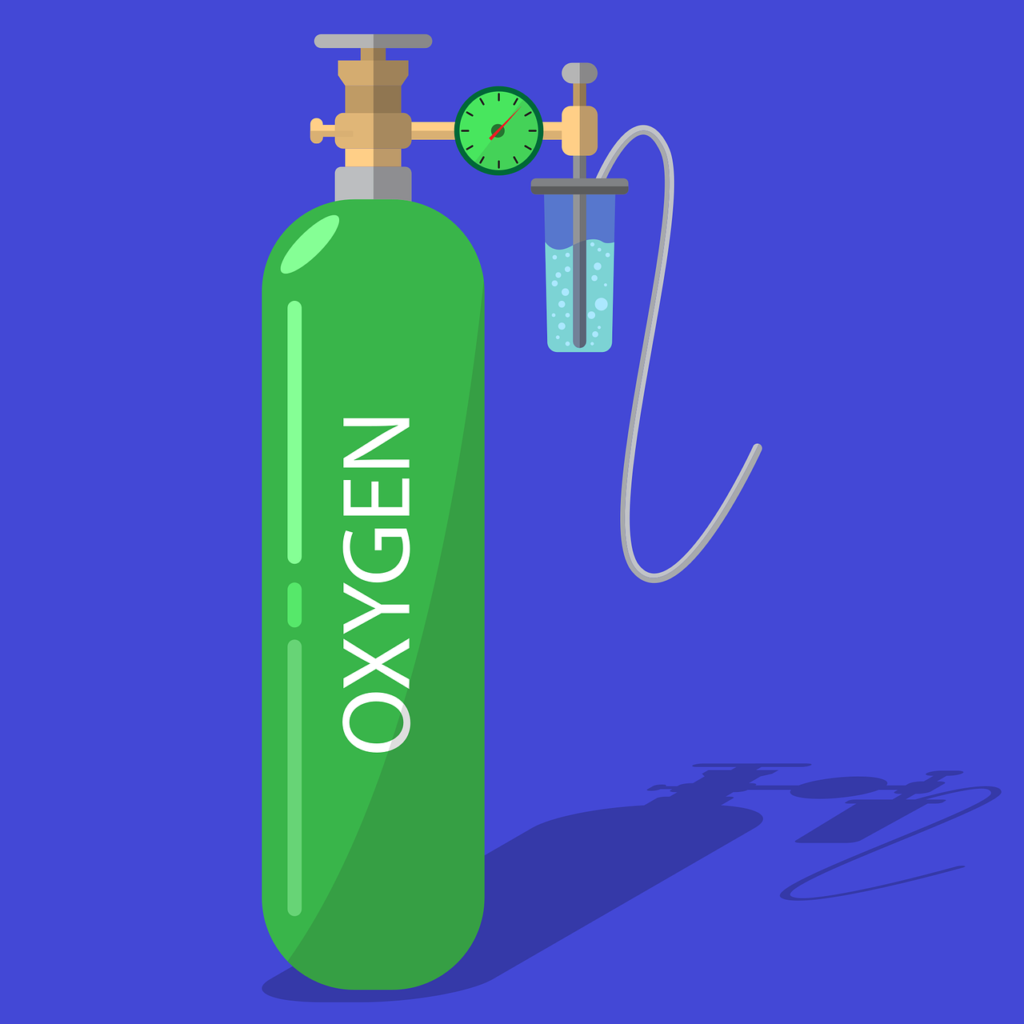Introduction

Oxygen is a critical element that keeps human life and powers every cell in the body. Everything from how well one’s brain functions to how efficiently it produces energy is influenced by how well the blood contains oxygen. This is a discussion of the oxygen levels in the body, how they are regulated and health implications.
1. Oxygen Levels in the Body Blood oxygen levels are usually quantified as a percentage content of oxygen in blood. The two main indicators that determine this are: Blood Oxygen Saturation (SpO 2 ): This reflects the percentage saturation of oxygenated hemoglobin to total hemoglobin in the blood- typically between 95 and 100% for healthy individuals.
Partial Pressure of Oxygen (PaO₂): It is the actual amount of oxygen that exists in blood, measured in millimeters of mercury (mmHg). For people not suffering from any diseases, the level of PaO₂ ranges between 75 to 100 mmHg.
2. Function of Proper Oxygen Levels
Oxygen will trigger most body functions. If the oxygen level is appropriate enough for the blood then the body organs and tissues work well. This is why maintaining the optimal oxygen levels is imperative.
Cellular Energy Production: Oxygen is used to produce adenosine triphosphate (ATP), the energy currency of the cell. ATP is the fuel for muscle contraction and protein synthesis, among other activities.
Brain Function: The human brain needs oxygen rich blood, after all consuming about 20% of oxygen in the human body, to catalyze all cognitive functions, including memory, concentration, and coordination.
Immune Defense: Here, the white blood cells- an important component of the body’s defense against any immune system, needs oxygen to break up the pathogens and repair the tissues.
Detoxification: The oxygen is needed by the liver for detoxification also that includes chemical breakdown, and removal of toxins from the body.
3. Mechanisms for regulating Oxygen Delivery
The body, therefore, employs a number of mechanisms to regulate levels of oxygen and ensure sufficient oxygen supply to the tissues.
Respiratory System: The lungs are the pathway by which oxygen enters the body. Air within the lungs diffuses into the blood. Oxygen rate for breathing varies with a need in the body, such as during exercise or when a person is up at a high altitude.
Circulatory System: This system in human bodies comprises the heart beating to push oxygenated blood in the arteries to several tissues and organs. With carbon dioxide, it flows back to the lungs to refill it with oxygen.
Hemoglobin and Red Blood Cells: Hemoglobin is a protein that is present in red blood cells that binds oxygen for the effective transportation to body tissues. In case of a reduced count of red blood cells or low levels of hemoglobin, it can cause anemia whereby oxygen levels would be reduced.
4. Symptoms of Low Oxygen Levels (Hypoxemia)
A condition where oxygen levels are below what they should be is termed hypoxemia. Symptoms can be varied but may include the following
Shortness of Breathing: A primary sign of low oxygen levels but is often accompanied by labored breathing.
Fatigue and Weakness: Depletion of low oxygen takes away the much-needed energy from the muscles and organs, causing fatigue.
Dizziness or Lightheadedness: Oxygen supply to the brain is constant; low oxygen can hinder its normal functioning, causing dizziness or a confused state.
Bluish Skin (Cyanosis): The victim may present the low oxygen symptom as bluish colorations appearing mainly on the lips and fingertips.
5. Causes for Low Oxygen Levels

The following are some conditions that can lead to low oxygen levels:
Lung Diseases: Such include chronic obstructive pulmonary disease, asthma, and pneumonia. They all reduce lung activity and thus oxygen uptake.
Heart Problems: Heart failure can lower blood flow, thereby decreasing the distribution of oxygen
High Altitude: The concentration of oxygen present in the air decreases with increased altitude. The body will struggle to maintain normal levels.
Anemia: A lower quantity of red blood cells reduces the carrying capacity of blood to oxygen.
6. Risk of Long-Term
Low Oxygen to Your Health
Long-term low oxygen levels cause severe problems to your health
organs damage: Long-term hypoxemia permanently damages the organs, especially the brain and heart, which require oxygen.
Degradation in thinking abilities; it will lose memory and mental skills gradually if deficient amounts of oxygen reach the brain.
Cardiac Strain: Lower oxygen levels force the heart to work, resulting in a possibility of heart failure in the long term.
Increased Susceptibility to Infections: The oxygen level may also affect the immune system, making the body highly susceptible to infections.
7. Oxygenation with Observation
Optimal oxygen levels should be maintained, especially in patients likely to have issues in their respiratory or cardiovascular system. There are important ways to increase oxygen levels as follows:
Exercise: Regular exercise promotes respiratory and cardiovascular fitness, which enables tissues to oxygenate more.
Deep Breathing Exercises: Deep breathing exercises can be beneficial in increasing lung volume through thereby enhancing the uptake of oxygen.
Quit Smoking: Lung tissue is damaged due to smoking; the lungs are not also able to take oxygen properly.
Oxygen Level Monitoring: A pulse oximeter can be used for home follow-up of a person with chronic
disorders by monitoring SpO₂ levels. Levels below 90% most of the time should be seen by a physician.
8. When to Seek Medical Care
Call for emergency medical help if you have any of the following symptoms of low oxygen: severe shortness of breath; persistent chest pain or pressure; confusion; or bluish coloration of the skin, lips, or nail beds. A sustained low oxygen level should always be assessed by a healthcare professional and treated with supplemental oxygen or other therapies.
9. Summary

Oxygen is the fuel that feeds life, enables the generation of energy, and manages vital functions of the body. Optimal oxygen levels are essential for good health and living well. Monitoring, healthy lifestyle choices, and appropriate medical intervention would enable optimization of oxygen level balance so as to facilitate optimal body function.



